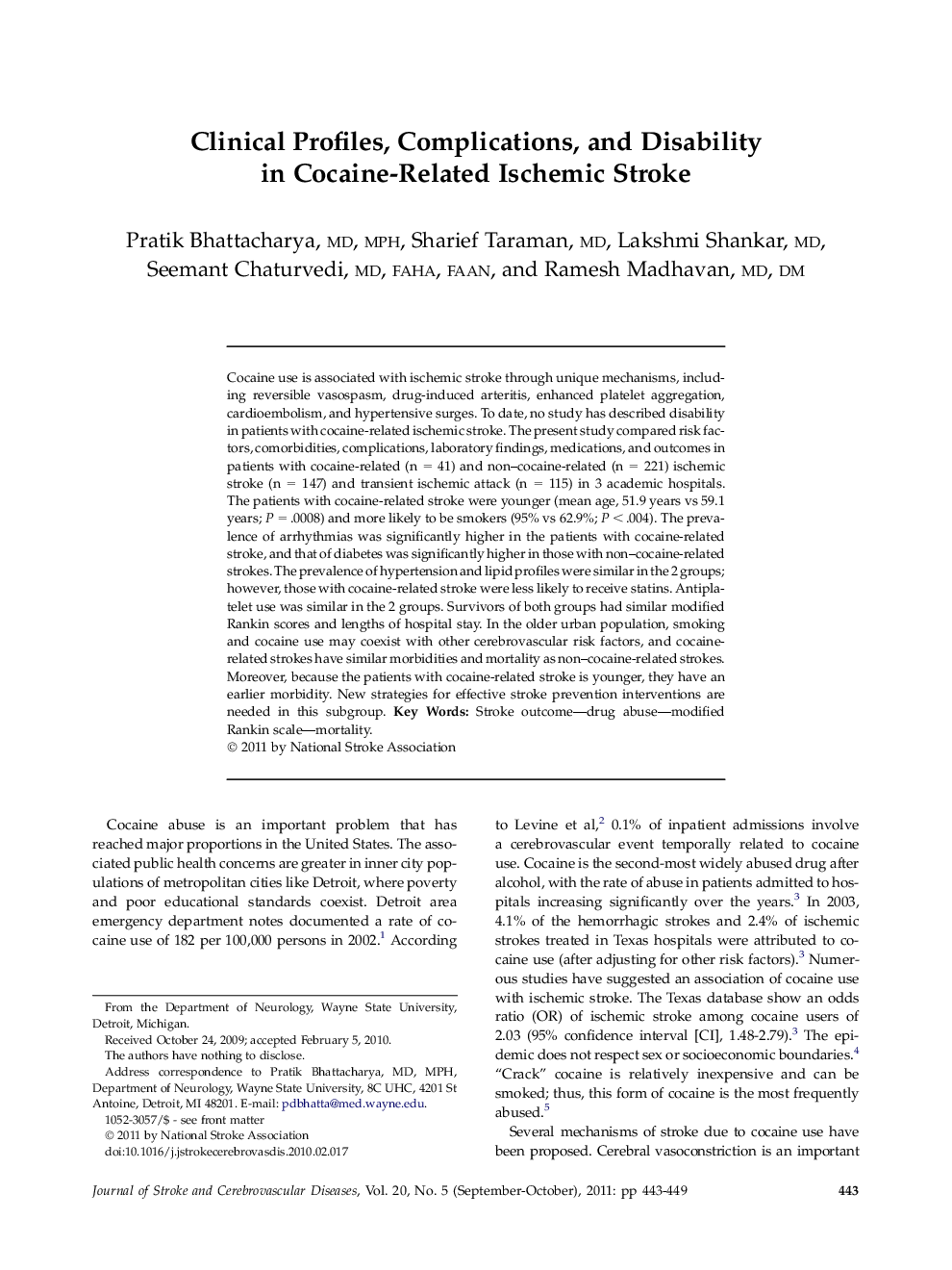| Article ID | Journal | Published Year | Pages | File Type |
|---|---|---|---|---|
| 2702087 | Journal of Stroke and Cerebrovascular Diseases | 2011 | 7 Pages |
Cocaine use is associated with ischemic stroke through unique mechanisms, including reversible vasospasm, drug-induced arteritis, enhanced platelet aggregation, cardioembolism, and hypertensive surges. To date, no study has described disability in patients with cocaine-related ischemic stroke. The present study compared risk factors, comorbidities, complications, laboratory findings, medications, and outcomes in patients with cocaine-related (n = 41) and non–cocaine-related (n = 221) ischemic stroke (n = 147) and transient ischemic attack (n = 115) in 3 academic hospitals. The patients with cocaine-related stroke were younger (mean age, 51.9 years vs 59.1 years; P = .0008) and more likely to be smokers (95% vs 62.9%; P < .004). The prevalence of arrhythmias was significantly higher in the patients with cocaine-related stroke, and that of diabetes was significantly higher in those with non–cocaine-related strokes. The prevalence of hypertension and lipid profiles were similar in the 2 groups; however, those with cocaine-related stroke were less likely to receive statins. Antiplatelet use was similar in the 2 groups. Survivors of both groups had similar modified Rankin scores and lengths of hospital stay. In the older urban population, smoking and cocaine use may coexist with other cerebrovascular risk factors, and cocaine-related strokes have similar morbidities and mortality as non–cocaine-related strokes. Moreover, because the patients with cocaine-related stroke is younger, they have an earlier morbidity. New strategies for effective stroke prevention interventions are needed in this subgroup.
